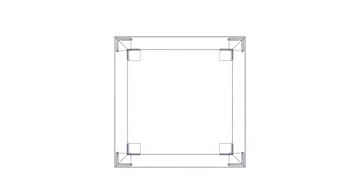.jpg)
Introduction:
One of the most common concerns I hear from humor writers and comedians is that they have days and sometimes weeks where they “can’t think of anything funny.” I thought to myself that I’m never without something to write or make jokes about. There’s always something there, it seems. So I thought about how my mind comes up with stuff and I want to share it with you now.
Keep in mind, this is just ONE of the methods I use to find and develop comedy material. Here’s the process:
I broke it down into steps and I’m going to give you that process right now. I’m calling it “JOKE-WRITING 1-2-3.”
Start with ideas that are close to you. Look around you, think about your surroundings, situations, behaviors and ask yourself 3 questions:
What is new?
What has changed?
What have I acquired?
What’s new? Every day is a new day. With all the holidays and special occasion days we celebrate in this country and worldwide, almost every day of every week gives us something to joke about. Did you know March 1st is National Pancake Day?
Of course, it is immediately followed by National Maple Syrup Day.
When you ask yourself these questions, don’t leave anything out! Write it all down! Just looking in the mailbox, I’m sure everyone has acquired a cell phone bill, heating bill, water bill, cable bill, etc. If you have a new pair of sneakers, let’s talk about them!
Too many comedians and humor writers stop too soon. They think, “there’s nothing funny there. They don’t take the time to write out everything about their sneakers and use their imagination to develop material. Every comedian and humor writer should be able to take any logical grouping of words and make it funny. But it takes dedication and work.
Stand-up comedy performance provides a space for audiences to experience collective effervescence. The biggest challenge to that effervescence is the heckler, and the ways in which comedians deal with hecklers underscore cultural understandings of what is or is not funny. I explore stand-up comedy shows on various levels to understand different forms of heckling and strategies for managing disruption through Michael Reay’s work on the social origins of humor and Jeffrey Alexander’s cultural pragmatics model. After explicating these theoretical models in relation to stand-up comedy, examples from live performances in Philadelphia and Boston, as well as selections from televised comedy performances, are used to examine heckling incidents and identify the advantages and risks involved in each type of respons.

Thank you for sharing. Keep up the good work... Keep blogging.
Downvoting a post can decrease pending rewards and make it less visible. Common reasons:
Submit
Congratulations @heipz! You have completed some achievement on Steemit and have been rewarded with new badge(s) :
Click on any badge to view your own Board of Honor on SteemitBoard.
To support your work, I also upvoted your post!
For more information about SteemitBoard, click here
If you no longer want to receive notifications, reply to this comment with the word
STOPDo not miss the last announcement from @steemitboard!
Downvoting a post can decrease pending rewards and make it less visible. Common reasons:
Submit